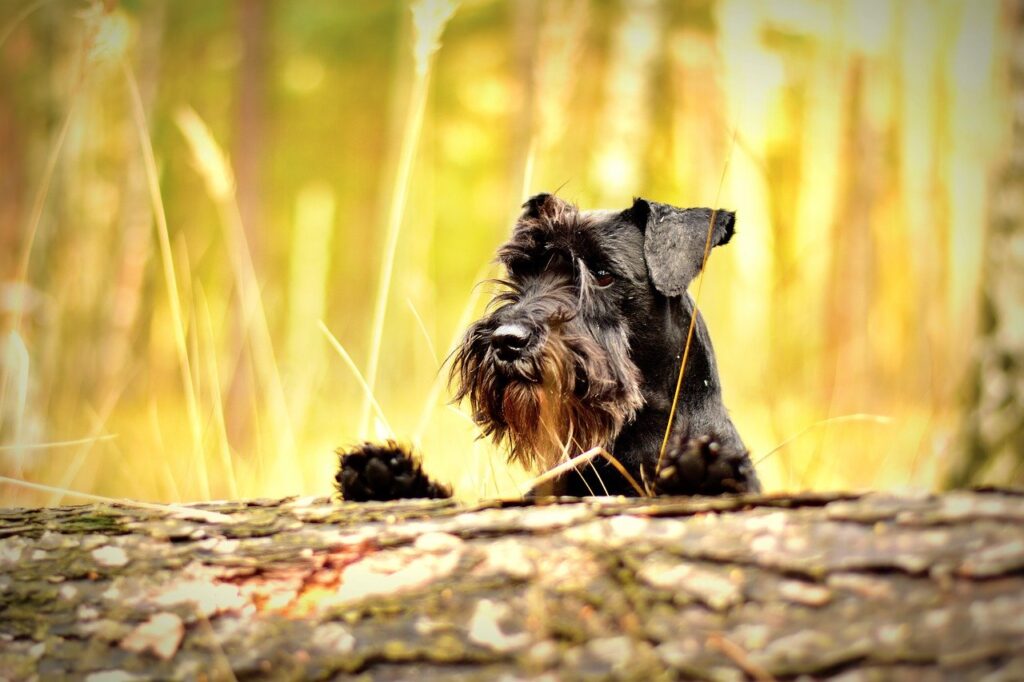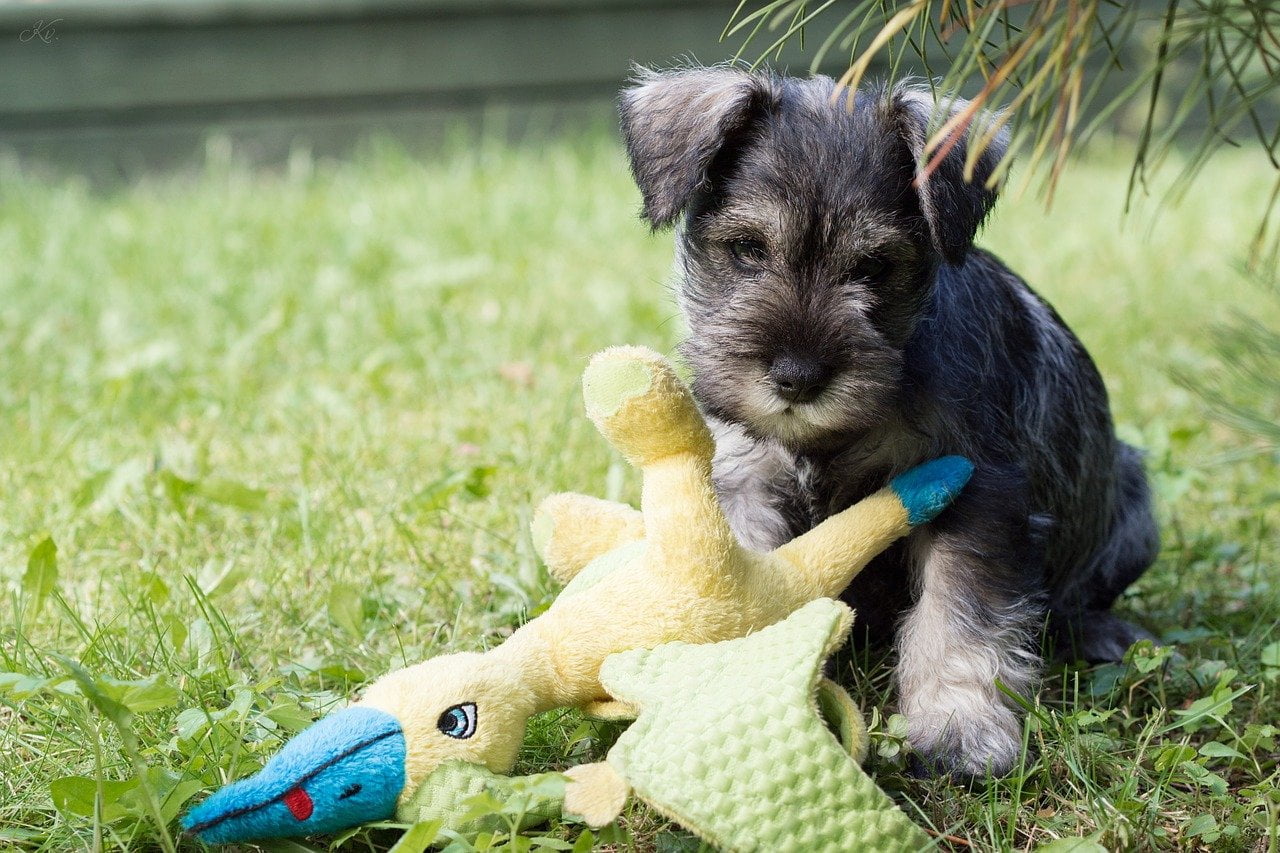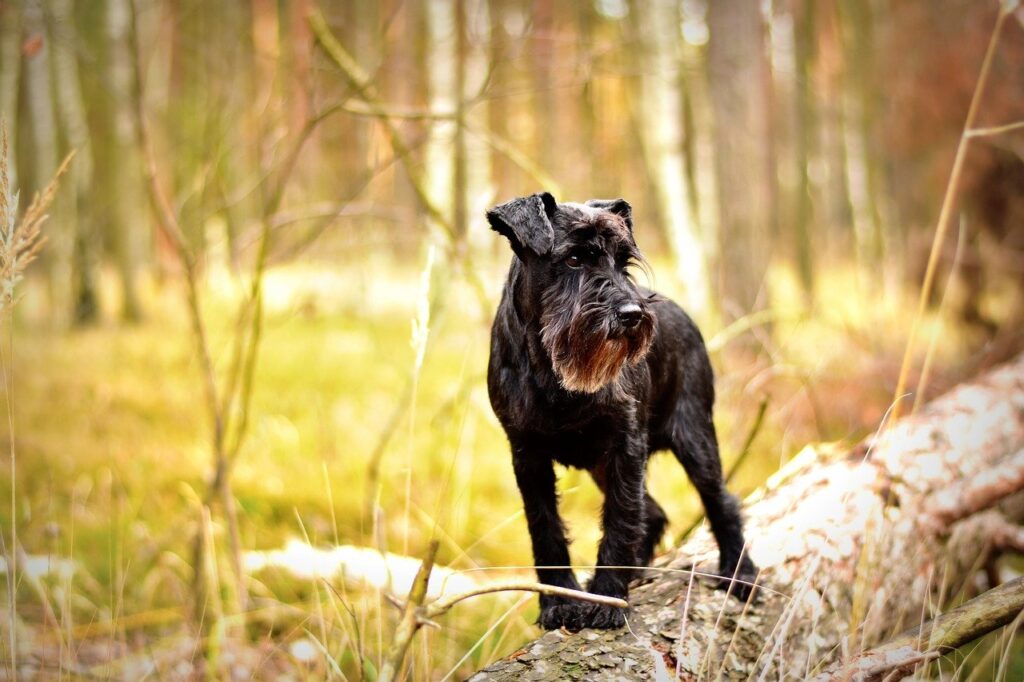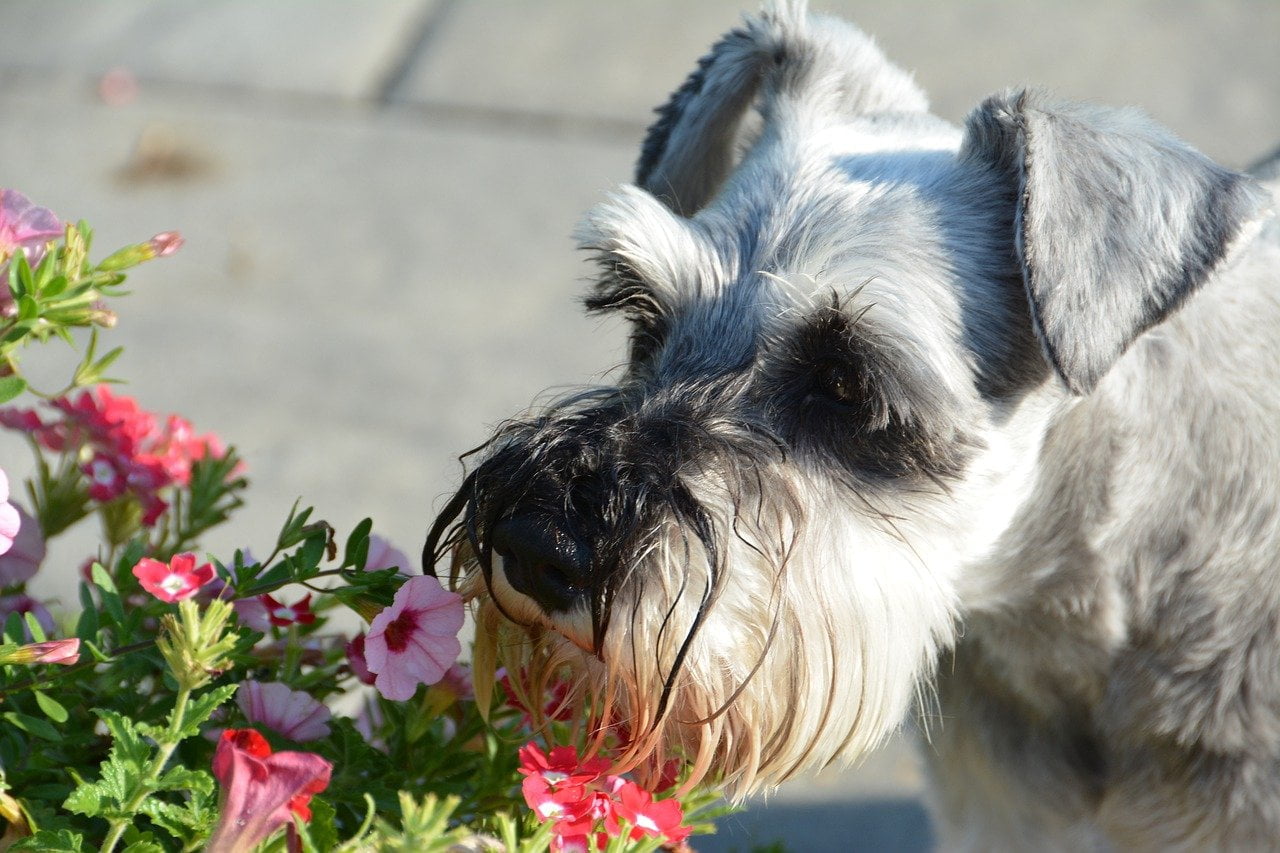
- Home
- Stud Dogs
Some of our most popular Stud Dog Breeds:
- Puppy Litters
- Dog Services
- Dog Breed Profiles
- Blog
- Contact Us
Miniature Schnauzer Breed Profile

The Miniature Schnauzer is a stylish show dog who loves family life. With an excellent temperament and character this breed will adapt easily to the lifestyle of the owner, being a robust and sturdy little dog. The eye catching colouring of a Miniature Schnauzer, as well as their non shedding coat, makes them a low maintenance companion for the family.
You will find that your Miniature Schnauzer has a large personality, always happy to join in the fun and games with an exuberant personality, easily accepting new additions to the household – whether people or other animals. For anyone who wants a dog that is adaptable, a manageable size and doesn’t shed their fur, as well as being very friendly and easy to train, a Miniature Schnauzer has it all.
Typical Miniature Schnauzer Facts:
Height: Male 12 to 14 in (30 to 36 cm)
Female 12 to 14 in (30 to 36 cm)
Weight: Male 14 to 18 lbs (6.4 to 8.2 kg)
Female 11 to 15 lbs (5 to 6.8 kg )
Average litter size: Four
Life expectancy: 9 to 15 years
Good with children: Yes
Kennel Club classification: Utility
Colour of a Miniature Schnauzer:
There are three colours that are accepted and these are pure black, black with silver markings and all
pepper and salt colours in even proportions. White Miniature Schnauzers are not a common occurrence and are rarely seen in the show ring.

Grooming of a Miniature Schnauzer:
Miniature Schnauzers have a double coat, with a soft, dense coat underneath a wiry, brittle outer coat. If your Miniature Schnauzer is a family pet you can either clip his fur or strip it, whichever you prefer. However, if you have a show dog you will have to either learn how to hand strip the fur or take him to a groomers to have his fur stripped every eight weeks or so. Regular brushing to keep his coat tangle free is essential, as well as clipping his nails if necessary. It is also recommended that you clean the teeth of your Miniature Schnauzer on a regular basis.
Common ailments/Health issues of a Miniature Schnauzer:
Miniature Schnauzers are a robust and healthy breed with very few common ailments or health issues. There are some possible ailments, such as urinary tract infections, skin/allergy problems, epilepsy and heart defects. It is also possible for a Miniature Schnauzer to suffer from congenital juvenile cataracts and progressive retinal atrophy, both of which cause blindness. However, if you obtain your puppy from a reputable breeder who has had all the necessary health checks and tests performed on the parents, there will be little chance of your dog having these problems. Miniature Schnauzers are tough little dogs and rarely suffer from illness.
Temperament of the Miniature Schnauzer:
Miniature Schnauzers are a charming breed with an open, honest and affectionate nature who love nothing more than to accompany you everywhere. They are intelligent little dogs who are easy to train and will learn very quickly as they are eager to please. It is preferable to start your training programme whilst your Miniature Schnauzer is quite young as they can also display a stubborn personality when they want to. They are not suited to being left for excessive periods of time as they require company and do not appreciate being left alone for hours at a time. The Miniature Schnauzer will greet you very vocally, although rather than bark, the noise they make is likened to ‘talking’ and is more of a groaning sound.
Training a Miniature Schnauzer:
Miniature Schnauzer are quick to learn and eager to please, so respond well to your training regime. Although they can be a little stubborn at times their intelligence makes them ideal candidates for obedience training.

Exercise for a Miniature Schnauzer:
Miniature Schnauzers are not excessively energetic but do like to run around and play all day. A 20 minute walk twice daily will help your Miniature Schnauzer to burn up his energy and keep him healthy. If you can manage more exercise he will certainly appreciate the time spent with his owner, even playing ball in the garden is acceptable to a Miniature Schnauzer.
History of the Miniature Schnauzer :
The origins of a Miniature Schnauzer are not totally clear, although records indicate that they date back to the nineteenth century with the first Miniature Schnauzer being recorded in 1888. It is possible that they were first introduced as early as the fifteenth century although there are no records to confirm this. They were bred in Germany from the standard Schnauzer being crossed with dogs such as a poodle, affenpinscher and a miniature pinscher. Believe it or not the Miniature Schnauzer was originally used by farmers as a farm dog, usually guarding the cattle as well as the family. Eventually farmers realised that the Miniature Schnauzer was exceptionally talented as a hunter of rats and other vermin, which became their purpose in life. Today Miniature Schnauzers are kept as companion dogs rather than their talent for catching vermin.
By 1928 the Miniature Schnauzer had reached the United Kingdom, quickly becoming extremely popular – with the British Miniature Schnauzer club being formed in 1933, replaced in 1953 by the Miniature Schnauzer Club, which is still the sole club for this breed. The Miniature Schnauzer was first recognised by the American Kennel Club in 1926 whilst still being grouped with the Standard Schnauzer. It was recognised independently by AKC in 1933 as a terrier. In the United Kingdom the Miniature Schnauzer is classified as part of the utility group.

Famous Miniature Schnauzers:
The Miniature Schnauzer has appeared in several paintings by the artist Albrecht Durer, who is thought to have owned a Miniature Schnauzer himself. There are several paintings which depict what seems to be the same dog at different stages of its life. A dog which appears to be a schnauzer was featured in a tapestry called ‘Crown of Thorns’ by Lucas Cranack the Elder in 1501. A Miniature Schnauzer also appears in a statue called ‘The night watchman’, sculpted in 1620 in Stuttgart, Germany.